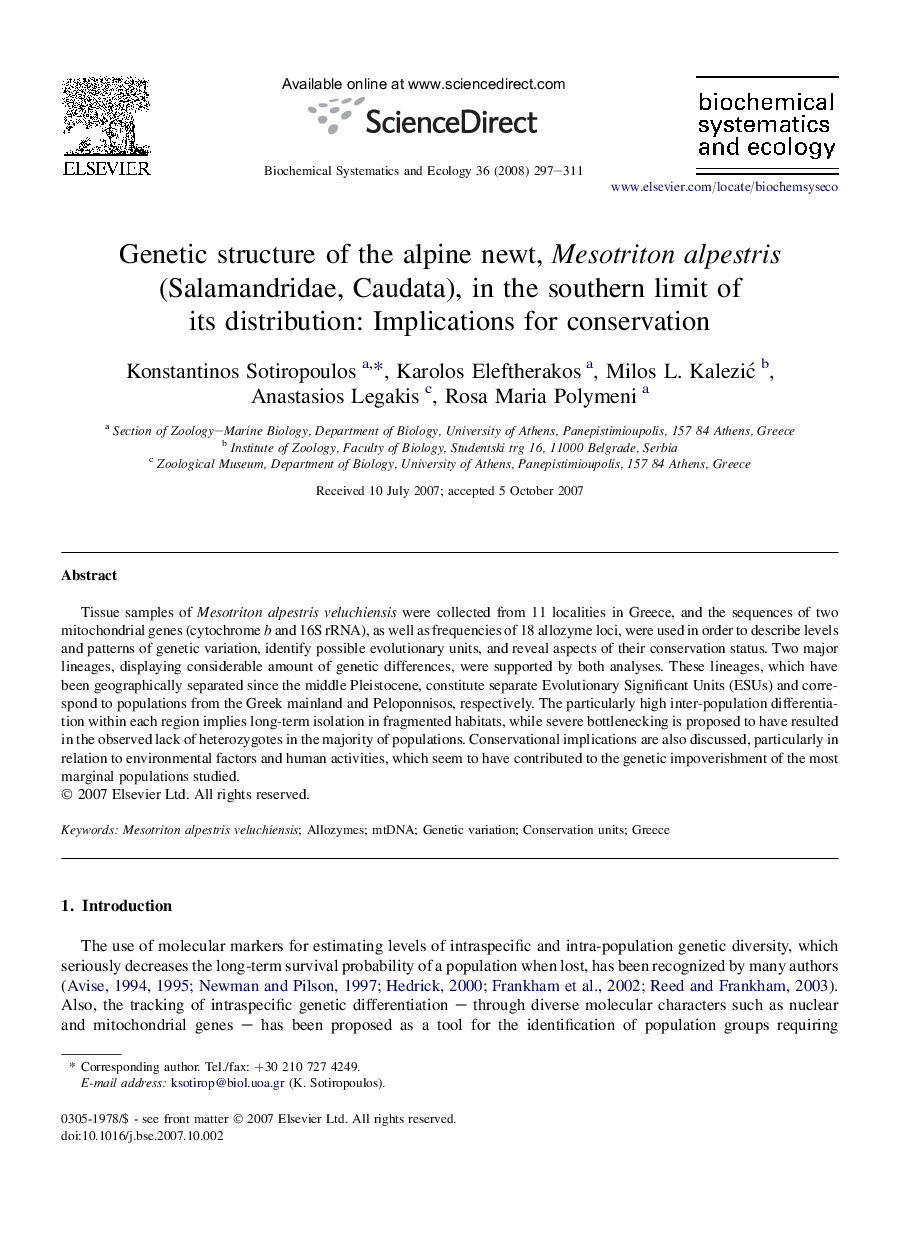| Article ID | Journal | Published Year | Pages | File Type |
|---|---|---|---|---|
| 1354842 | Biochemical Systematics and Ecology | 2008 | 15 Pages |
Abstract
Tissue samples of Mesotriton alpestris veluchiensis were collected from 11 localities in Greece, and the sequences of two mitochondrial genes (cytochrome b and 16S rRNA), as well as frequencies of 18 allozyme loci, were used in order to describe levels and patterns of genetic variation, identify possible evolutionary units, and reveal aspects of their conservation status. Two major lineages, displaying considerable amount of genetic differences, were supported by both analyses. These lineages, which have been geographically separated since the middle Pleistocene, constitute separate Evolutionary Significant Units (ESUs) and correspond to populations from the Greek mainland and Peloponnisos, respectively. The particularly high inter-population differentiation within each region implies long-term isolation in fragmented habitats, while severe bottlenecking is proposed to have resulted in the observed lack of heterozygotes in the majority of populations. Conservational implications are also discussed, particularly in relation to environmental factors and human activities, which seem to have contributed to the genetic impoverishment of the most marginal populations studied.
Related Topics
Physical Sciences and Engineering
Chemistry
Organic Chemistry
Authors
Konstantinos Sotiropoulos, Karolos Eleftherakos, Milos L. KaleziÄ, Anastasios Legakis, Rosa Maria Polymeni,
